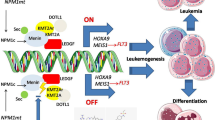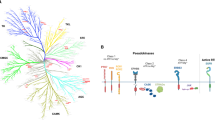Abstract
Rhabdomyosarcoma (RMS) is a highly malignant and metastatic pediatric cancer that arises from the skeletal muscle. Recent studies have identified an important role of AKT signaling in RMS progression. In the current study, we investigated the activity of perifosine, an oral alkylphospholipid AKT inhibitor, against human RMS cells (RD and Rh-30 lines) both in vivo and in vitro, and studied the underlying mechanisms. We showed that perifosine significantly inhibited RMS cell growth in concentration- and time-dependent manners. Meanwhile, perifosine induced dramatic apoptosis in RMS cells. At the signaling level, perifosine blocked AKT activation, while inducing reactive oxygen species (ROS) production as well as JNK and P38 phosphorylations in RMS cells. Restoring AKT activation by introducing a constitutively active-AKT (CA-AKT) only alleviated (not abolished) perifosine-induced cytotoxicity in RD cells. Yet, the ROS scavenger N-acetyl cysteine (NAC) as well as pharmacological inhibitors against JNK (SP-600125) or P38 (SB-203580) suppressed perifosine-induced cytotoxicity in RMS cells. Thus, perifosine induces growth inhibition and apoptosis in RMS cells through mechanisms more than just blocking AKT. In vivo, oral administration of perifosine significantly inhibited growth of Rh-30 xenografts in severe combined immunodeficient (SCID) mice. Our data indicate that perifosine might be further investigated as a promising anti-RMS agent.





Similar content being viewed by others
References
Dagher R, Helman L. Rhabdomyosarcoma: an overview. Oncologist. 1999;4:34–44.
Merlino G, Helman LJ. Rhabdomyosarcoma—working out the pathways. Oncogene. 1999;18:5340–8.
Spunt SL, Smith LM, Ruymann FB, Qualman SJ, Donaldson SS, Rodeberg DA, et al. Cyclophosphamide dose intensification during induction therapy for intermediate-risk pediatric rhabdomyosarcoma is feasible but does not improve outcome: a report from the soft tissue sarcoma committee of the children’s oncology group. Clin Cancer Res. 2004;10:6072–9.
Crist WM, Anderson JR, Meza JL, Fryer C, Raney RB, Ruymann FB, et al. Intergroup rhabdomyosarcoma study-iv: Results for patients with nonmetastatic disease. J Clin Oncol. 2001;19:3091–102.
Vanhaesebroeck B, Stephens L, Hawkins P. Pi3k signalling: the path to discovery and understanding. Nat Rev Mol Cell Biol. 2012;13:195–203.
Fruman DA, Rommel C. Pi3k and cancer: lessons, challenges and opportunities. Nat Rev Drug Discov. 2014;13:140–56.
Petricoin 3rd EF, Espina V, Araujo RP, Midura B, Yeung C, Wan X, et al. Phosphoprotein pathway mapping: akt/mammalian target of rapamycin activation is negatively associated with childhood rhabdomyosarcoma survival. Cancer Res. 2007;67:3431–40.
Cao L, Yu Y, Darko I, Currier D, Mayeenuddin LH, Wan X, et al. Addiction to elevated insulin-like growth factor i receptor and initial modulation of the akt pathway define the responsiveness of rhabdomyosarcoma to the targeting antibody. Cancer Res. 2008;68:8039–48.
Cirstea D, Hideshima T, Rodig S, Santo L, Pozzi S, Vallet S, et al. Dual inhibition of akt/mammalian target of rapamycin pathway by nanoparticle albumin-bound-rapamycin and perifosine induces antitumor activity in multiple myeloma. Mol Cancer Ther. 2010;9:963–75.
Kondapaka SB, Singh SS, Dasmahapatra GP, Sausville EA, Roy KK. Perifosine, a novel alkylphospholipid, inhibits protein kinase b activation. Mol Cancer Ther. 2003;2:1093–103.
Ruiter GA, Zerp SF, Bartelink H, van Blitterswijk WJ, Verheij M. Alkyl-lysophospholipids activate the sapk/jnk pathway and enhance radiation-induced apoptosis. Cancer Res. 1999;59:2457–63.
Fei HR, Chen G, Wang JM, Wang FZ. Perifosine induces cell cycle arrest and apoptosis in human hepatocellular carcinoma cell lines by blockade of akt phosphorylation. Cytotechnology. 2010;62:449–60.
Papa V, Tazzari PL, Chiarini F, Cappellini A, Ricci F, Billi AM, et al. Proapoptotic activity and chemosensitizing effect of the novel akt inhibitor perifosine in acute myelogenous leukemia cells. Leukemia. 2008;22:147–60.
Crul M, Rosing H, de Klerk GJ, Dubbelman R, Traiser M, Reichert S, et al. Phase i and pharmacological study of daily oral administration of perifosine (d-21266) in patients with advanced solid tumours. Eur J Cancer. 2002;38:1615–21.
Van Ummersen L, Binger K, Volkman J, Marnocha R, Tutsch K, Kolesar J, et al. A phase i trial of perifosine (nsc 639966) on a loading dose/maintenance dose schedule in patients with advanced cancer. Clin Cancer Res. 2004;10:7450–6.
Zhang JL, Xu Y, Shen J. Cordycepin inhibits lipopolysaccharide (lps)-induced tumor necrosis factor (tnf)-alpha production via activating amp-activated protein kinase (ampk) signaling. Int J Mol Sci. 2014;15:12119–34.
Shen J, Liang L, Wang C. Perifosine inhibits lipopolysaccharide (lps)-induced tumor necrosis factor (tnf)-alpha production via regulation multiple signaling pathways: new implication for Kawasaki disease (kd) treatment. Biochem Biophys Res Commun. 2013;437:250–5.
Sun H, Yu T, Li J. Co-administration of perifosine with paclitaxel synergistically induces apoptosis in ovarian cancer cells: more than just akt inhibition. Cancer Lett. 2011;310:118–28.
Gills JJ, Dennis PA. Perifosine: update on a novel akt inhibitor. Curr Oncol Rep. 2009;11:102–10.
Fensterle J, Aicher B, Seipelt I, Teifel M, Engel J. Current view on the mechanism of action of perifosine in cancer. Anti Cancer Agents Med Chem. 2014;14:629–35.
Ji C, Yang YL, Yang Z, Tu Y, Cheng L, Chen B, et al. Perifosine sensitizes uvb-induced apoptosis in skin cells: new implication of skin cancer prevention? Cell Signal. 2012;24:1781–9.
Chen MB, Wu XY, Tao GQ, Liu CY, Chen J, Wang LQ, et al. Perifosine sensitizes curcumin induced anti-colorectal cancer effects by targeting multiple signaling pathways both in vivo and in vitro. Int J Cancer. 2012;131(11):2487–98.
Krawczyk J, Keane N, Swords R, O'Dwyer M, Freeman CL, Giles FJ. Perifosine—a new option in treatment of acute myeloid leukemia? Expert Opin Investig Drugs. 2013;22:1315–27.
Srivastava N, Cho DC. Perifosine in renal cell carcinoma. Expert Opin Investig Drugs. 2013;22:285–91.
Richardson PG, Eng C, Kolesar J, Hideshima T, Anderson KC. Perifosine, an oral, anti-cancer agent and inhibitor of the akt pathway: mechanistic actions, pharmacodynamics, pharmacokinetics, and clinical activity. Expert Opin Drug Metab Toxicol. 2012;8:623–33.
Vivanco I, Sawyers CL. The phosphatidylinositol 3-kinase akt pathway in human cancer. Nat Rev Cancer. 2002;2:489–501.
Wang Q, Wang X, Hernandez A, Hellmich MR, Gatalica Z, Evers BM. Regulation of trail expression by the phosphatidylinositol 3-kinase/akt/gsk-3 pathway in human colon cancer cells. J Biol Chem. 2002;277:36602–10.
Yao C, Wei JJ, Wang ZY, Ding HM, Li D, Yan SC, et al. Perifosine induces cell apoptosis in human osteosarcoma cells: new implication for osteosarcoma therapy? Cell Biochem Biophys. 2013;65:217–27.
Tazzari PL, Tabellini G, Ricci F, Papa V, Bortul R, Chiarini F, et al. Synergistic proapoptotic activity of recombinant trail plus the akt inhibitor perifosine in acute myelogenous leukemia cells. Cancer Res. 2008;68:9394–403.
Rahmani M, Reese E, Dai Y, Bauer C, Payne SG, Dent P, et al. Coadministration of histone deacetylase inhibitors and perifosine synergistically induces apoptosis in human leukemia cells through akt and erk1/2 inactivation and the generation of ceramide and reactive oxygen species. Cancer Res. 2005;65:2422–32.
Hideshima T, Catley L, Yasui H, Ishitsuka K, Raje N, Mitsiades C, et al. Perifosine, an oral bioactive novel alkylphospholipid, inhibits akt and induces in vitro and in vivo cytotoxicity in human multiple myeloma cells. Blood. 2006;107:4053–62.
Momota H, Nerio E, Holland EC. Perifosine inhibits multiple signaling pathways in glial progenitors and cooperates with temozolomide to arrest cell proliferation in gliomas in vivo. Cancer Res. 2005;65:7429–35.
Ghobrial IM, Roccaro A, Hong F, Weller E, Rubin N, Leduc R, et al. Clinical and translational studies of a phase ii trial of the novel oral akt inhibitor perifosine in relapsed or relapsed/refractory Waldenstrom’s macroglobulinemia. Clin Cancer Res. 2010;16:1033–41.
Vink SR, Schellens JH, Beijnen JH, Sindermann H, Engel J, Dubbelman R, et al. Phase i and pharmacokinetic study of combined treatment with perifosine and radiation in patients with advanced solid tumours. Radiother Oncol. 2006;80:207–13.
Knowling M, Blackstein M, Tozer R, Bramwell V, Dancey J, Dore N, et al. A phase ii study of perifosine (d-21226) in patients with previously untreated metastatic or locally advanced soft tissue sarcoma: a National Cancer Institute Of Canada Clinical Trials Group trial. Investig New Drugs. 2006;24:435–9.
Pal I, Mandal M. Pi3k and akt as molecular targets for cancer therapy: current clinical outcomes. Acta Pharmacol Sin. 2012;33:1441–58.
Acknowledgments
This work is supported by the Project of Science and Technology Department of Zhejiang Province (2014C33206).
Conflicts of interest
None
Author information
Authors and Affiliations
Corresponding authors
Rights and permissions
About this article
Cite this article
Shen, J., Hong, Y., Zhao, Q. et al. Preclinical evaluation of perifosine as a potential promising anti-rhabdomyosarcoma agent. Tumor Biol. 37, 1025–1033 (2016). https://doi.org/10.1007/s13277-015-3740-4
Received:
Accepted:
Published:
Issue Date:
DOI: https://doi.org/10.1007/s13277-015-3740-4




